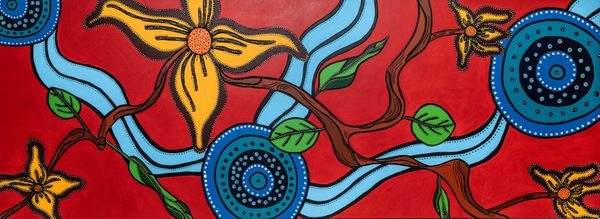The Importance of visual arts and creativity in education
The Importance of visual arts and creativity in education
By Mr Brad Cooney, Deputy Principal, Head of Secondary School

In the modern educational landscape, the significance of visual arts and creativity is often overshadowed by a predominant focus on STEM (Science, Technology, Engineering and Mathematics) subjects. However, integrating visual arts into education is not merely about fostering artistic talent, it is about cultivating a well-rounded, innovative and emotionally intelligent generation. Visual arts and creativity play a crucial role in developing critical thinking skills, enhancing academic performance and promoting mental well-being among students.
Holistic Development
Visual arts education contributes to the holistic development of students by nurturing their cognitive, emotional and social skills. Engaging in artistic activities stimulates the brain in ways that enhance problem-solving abilities and critical thinking. When students create art, they are required to make choices, analyse their decisions and reflect on their outcomes, which mirrors the cognitive processes used in complex problem-solving scenarios.
Moreover, the emotional aspect of visual arts cannot be overstated. Art provides a medium for self-expression, allowing students to convey their thoughts and emotions in a non-verbal way. This is particularly beneficial for those who may struggle with traditional forms of communication. Through art, students can explore their identity, manage stress and build self-esteem, contributing to better emotional resilience.
Enhancing Academic Performance
Contrary to the misconception that arts education detracts from academic rigor, numerous studies have shown that it enhances academic performance. The skills developed through arts education – such as observation, interpretation and critical analysis – are transferable to other academic disciplines. For example, the attention to detail required in visual arts can improve reading comprehension, while the creative thinking fostered through artistic endeavours can enhance mathematical problem-solving.
Fostering Innovation
In today’s rapidly changing world, the ability to innovate is more valuable than ever. Creativity is the driving force behind innovation and visual arts are a fertile ground for nurturing creative thinking. Through art, students learn to approach problems from different angles, experiment with new ideas and develop original solutions. This mindset is invaluable in fields such as technology, business, and science, where innovation is key to success.
Moreover, arts education encourages collaboration and teamwork. Many artistic projects require students to work together, share ideas and compromise, fostering skills that are essential in the modern workforce. By learning to appreciate diverse perspectives and collaborating effectively, students are better prepared for the collaborative nature of contemporary work environments.
Promoting Cultural Awareness and Empathy
Visual arts education also plays a significant role in promoting cultural awareness and empathy. Art reflects cultural heritage and societal values, and through art education, students gain insights into different cultures and historical contexts. This exposure fosters an appreciation for diversity and a deeper understanding of global issues.
Furthermore, creating and analysing art can develop empathy in students. By understanding the experiences and emotions of others through their artistic expressions, students become more compassionate and open-minded. This empathetic outlook is crucial for building inclusive communities and addressing social challenges.
Supporting Mental Health
The positive impact of visual arts on mental health is well-documented. Art provides an outlet for expressing complex emotions and can serve as a therapeutic tool for managing anxiety, depression and other mental health issues. In educational settings, incorporating visual arts into the curriculum can create a supportive environment where students feel safe to explore their feelings and experiences.
Art activities promote mindfulness, reduce stress and increase overall well-being. For students facing academic pressures and the challenges of adolescence, art can be a sanctuary for relaxation and self-discovery.
The integration of visual arts and creativity into our curriculum here at Radford College is not just an enhancement but a necessity for fostering a well-rounded, innovative and empathetic generation. Visual arts education enriches the learning experience, supports academic and personal growth and equips students with the critical skills needed to navigate an increasingly complex world. By recognizing and valuing the importance of visual arts, educators can cultivate a more balanced and forward-thinking educational environment, preparing students not only to succeed but to thrive.
Our Visual Art students will be exhibiting their work alongside practicing artists from across the capital in our Artshow@Radford Exhibition that opens this Friday, 17 May, and is open to the public Saturday and Sunday from 10.00 am to 4.00 pm. Please come along and support our students in their creative pursuits.
